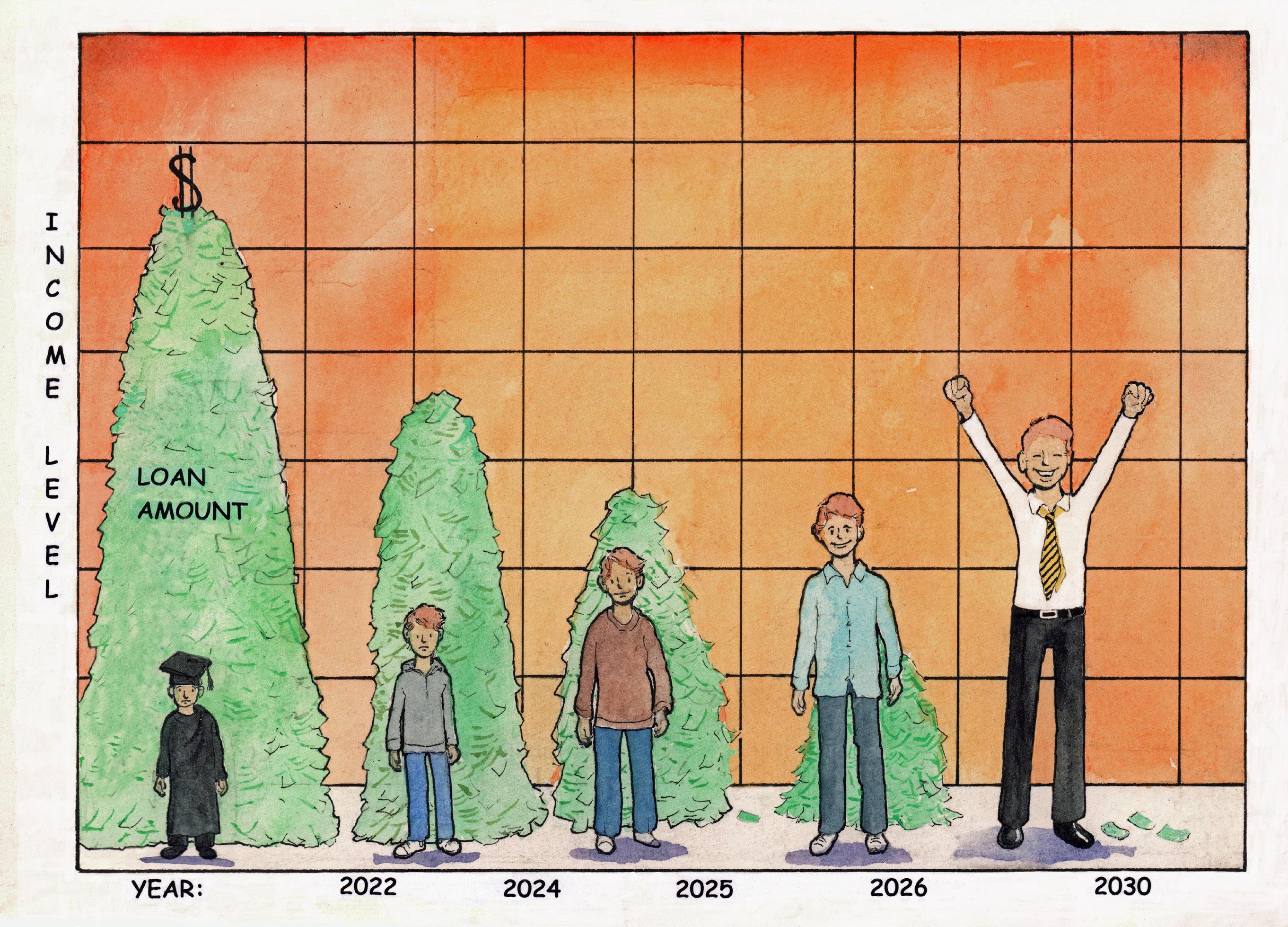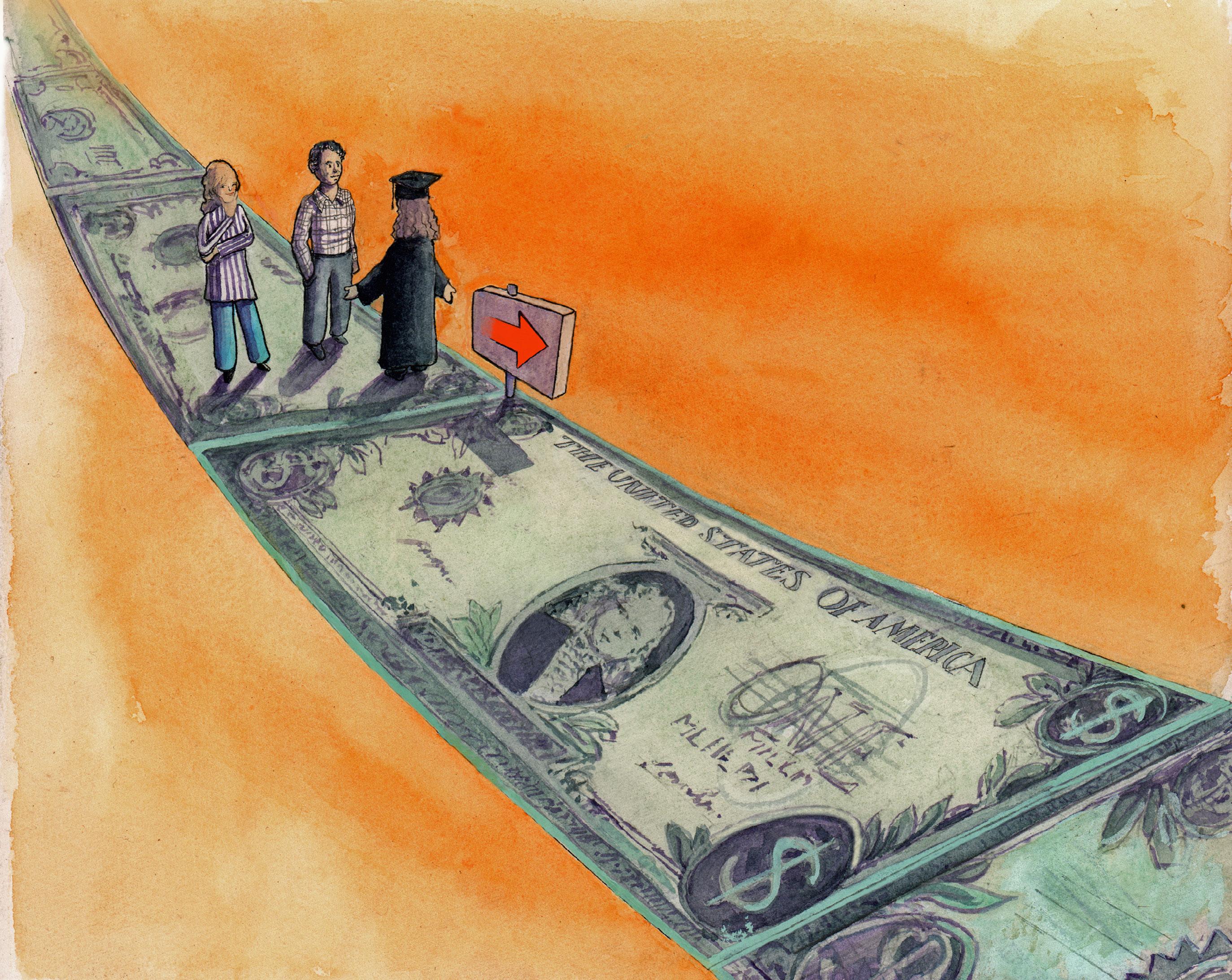
6 minute read
The Importance of Saving
Why Do I Need To Know This? Saving money for the future, for a big purchase or for an emergency, is just as important as putting money in your checking account to pay for your daily expenses. Let’s say you want to buy a car and you plan on financing the car with a car loan. You have checked your budget and you can afford the monthly payments and still maintain your good credit. In order to get the car loan, you’ll need to make a “down payment”, which is money you must give to the loan company to get your loan started. The down payment lets you have the car—let’s you drive it home! The amount of a down payment might be $1,000, $2,000 or even $5,000, depending on the sales price of the car and on your credit score. Most people save that sum of money up in their savings account over a period of time. They also earn a small amount of interest on their savings, which means their money grows just by sitting in the bank.
How Do I Get Started? You already have a basic bank account, a good sense of your monthly budget and a credit card. Now, let’s look at a savings account, which is a type of bank account that helps you save money, usually for emergencies. Savings are very helpful if you lose your job, have unexpected expenses, or need extra money (more than you have in your regular bank account) right away. You never know when you’ll need it; when you do, you’ll be grateful you have it.
Most banks can offer interest rates for savings accounts. This means that a small percentage of money, often less
Quick Tips
• Setting up automatic transfers from your check ing account to your savings account is the simplest way to start saving.
Automatically deposit a percentage of each paycheck into an account. Once it’s set up, you won’t even notice that the money is coming out of your check. Before you know it, you’ll have a pile of cash ready for a rainy day.
Apps, like Acorns, help you round-up your purchases to the nearest dollar and deposit it into your savings account. It’s super easy and you can monitor it from your mobile device.
than 1%, will be added to your savings account every year. Every bank offers different interest rates, so be sure to do your research!
If you start saving early in your life, you will accumulate a lot of money over time. It is really important to have an account like this. Even if you don’t earn interest on this account, make it a habit to add money to it regularly. For instance, you can set up automatic transfers from your checking to your sav ings account on a daily, weekly, monthly or even yearly basis. If you transfer $20 per month, that’s $240 a year. If you have a savings account for 20 years, that turns into $4800! Whatever amount you can spare each month is worth transferring to your savings. Then, when you have an unexpected or extra large expense, you won’t have to worry because you’ll have the funds to cover it.
Other Ways To Save We’ve talked a lot about savings accounts, but there are other kinds of accounts that are also great ways to save money—sometimes tax-free. After you’ve been budgeting, spending, and saving for awhile, you’ll be ready to dive into the pool of alternate savings devices. And don’t forget—always start by researching the options!
Individual Retirement Accounts (IRAs) are a type of savings account that help you save for retirement and offers some tax advantages. There are two types, include a Traditional IRA and a Roth IRA. Roth’s can be a good option for
younger people who aren’t making a lot of money.
401(k) accounts are employer retirement plan accounts. Everyone should participate in this option, especially if your employer provides a match—meaning for every dollar you put in, your employer contributes a certain amount, too. That’s free money! Your goal should be to contribute at least the maximum amount your employer will match. The earlier you start saving for retirement, the better off you’ll be when you get there—we’re talking multi-millionaire status.
Personal Finance Stories
Jake wants to save money but tends to live paycheck to paycheck and has a hard time finding a way to transfer money into his savings account every week or even each month. So, after doing some research online, he found an app that enables him to connect his bank accounts and credit cards to the app. Then, every time he makes a purchase using those linked cards or accounts, the purchase is rounded up to the nearest dollar, and the change is added to a savings account in the app. For example, if he buys a coffee drink for $2.45, the app rounds it up to $3 and the extra $0.55 is added to the app. It’s basically a “set it and forget it strategy” for saving.
Jake has been using the app for over a year now and has been able to save more than $1,000, just with roundups of his “pocket change.” He barely misses the extra change is able to save, and is excited to see his savings growing. His new goal is to save more quickly, so he’s changed a setting in the app too add $10 per week on top of the roundups. Jake has discovered that saving money is actually fun!
Exercise: compounding interest
The More You Save, The More You Earn
When you open a checking account, often you can add a savings account at the same time . A savings account allows you to save money in the bank and earn money, called interest, based on the amount you’re saving . The money you earn is called interest and how often you earn it depends on what type of savings account you have . Basiclly, interest is “free” money the bank pays you to keep in one of their accounts . The longer your money stays in the bank, the more money you earn .
Consider this example: would you rather have $10,000 right now, or a penny? You’d probably choose $10,000 . But, what if I told you that the penny will double its value every day that you leave it in the bank? Now what would you choose? $10,000 now or the penny later? After 30 days, that penny would be worth $5 .3 million, and by day 31, you’d have $10 .7 million .
This is an exaggerated example, but it shows how compound interest works. Just a little bit of money left in an account over a longer period of time could grow substantially .
COMPOUNDING CALCULATOR
DAY 1 DAY 2 DAY 3 DAY 4 DAY 5 DAY 6 DAY 7 DAY 8 DAY 9 DAY 10 DAY 11 DAY 12 DAY 13 DAY 14 DAY 15 DAY 16 DAY 17 DAY 18 DAY 19 DAY 20 DAY 21 DAY 22 DAY 23 DAY 24 DAY 25 DAY 26 DAY 27 DAY 28 DAY 29 DAY 30 DAY 31
$0.01 $0.02 $0.04 $0.08 $0.16 $0.32 $0.64 $1.28 $2.56 $5.12 $10.24 $20.48 $40.96 $81.92 $163.84 $327.68 $655.36 $1,310.72 $2,621.44 $5,242.88 $10,485.76 $20,971.52 $41,943.04 $83,886.08 $167,772.16 $335,544.32 $671,088.64 $1,342.177.28 $2,684,354.56 $5,368,709.12 $10,737.418.23











